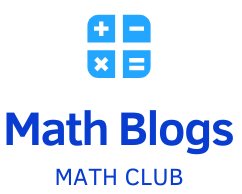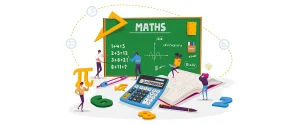Mathematics is always a challenge to learners of all ages, however the entry of technology into this sector has seen the introduction of innovative tools that make it easier and more enjoyable for students to master this subject. To be successful academically as a student, sharpen up your analytical skills as a professional or improve your problem-solving skills as an individual; math can be approached differently through new thinking. Starting from interactive applications to advanced softwares, these tools accommodate different learning styles and levels and thus foster self-assurance in mathematics.
Interactive Mathematics Apps for Students
Interactive apps are among the most effective ways towards bettering math skills. These programs change abstract concepts into practical learning experiences. For example, apps like Photomath enable its users to solve equations simply by scanning them with their phone’s camera. Apart from giving answers, these apps take apart each step so that users can see the process and principles behind it. In the same way, Khan Academy presents an extensive collection of videos lessons on several topics in math such as geometry or calculus making it a resourceful platform for any learner at every stage.
Dynamic Data Visualization Apps
When it comes to understanding intricate mathematical ideas, visualizations are instrumental and modern tools are at the top in this area. GeoGebra and Desmos, for example, geometry and graphing tools have dynamic visualizations that allow users to explore shapes, equations and functions interactively. For example, through Desmos students are able to plot graphs as they change in real-time thus realizing how their appearance is influenced by changes in equations. Such tools enhance comprehension while making mathematics more enjoyable because they enable users to experiment with things and discover patterns on their own.
Transition Sentences
As a result, these visualization tools not only aid understanding but make math more interesting since it enables one to carry out experiments independently so as to discover linkages on their own.
This personalization strategy guarantees that learners can be neither overwhelmed nor under-challenged thus giving them the best possible learning experience which accelerates skills development.
Gamification for Motivation
Learning math has changed with technology-based trends like gamification. Prodigy Math Game apps turn mathematical problem solving into a mission through multiple levels, challenges, thrills and rewards to retain interest in the learning process. This tool is designed to merge education with fun and excitement of gaming that encourages young learners to embrace regular practice and maintain a positive attitude towards mathematics.
Comprehensive Math Software for Advanced Learners
For people that are advanced learners or professionals, there are several math programs that offer an all-inclusive package such as Wolfram Alpha and Mathematica to help students in exploring more complicated mathematical concepts. These tools are highly used in engineering, physics, computer science where they provide symbolic computation, numerical analysis and data visualization among others. Apart from enhancing math skills, these solutions impart practical skills that can be applied across many sectors.
Online Collaboration Platforms Math is an area of study where it isn’t necessary to work alone. Microsoft Mathsolver and Wolfram Community are two such platforms, that facilitate student-to-student connection, idea sharing and teamwork for complex math tasks. Besides improving problem-solving skills, this collaborative approach also exposes students to multiple perspectives and techniques. Additionally, being part of a mathematical community can offer motivation and passion, which lightens the learning process.
Accessibility and Inclusive Mathematics education
Mathematics learning has become more accessible as well as inclusive due to innovative tools. Functions like text-to-speech functionality, alternative input methods or adjustable font size make it possible for those with disabilities to actively engage in mathematics exploration. Additionally, most of these tools are available on line at no charge or at lower prices hence ensuring quality math instruction reaches out to learners in isolated or marginalized areas. The democratization of education demonstrated how technology could potentially transform relations between people and help bridge societal gaps as well as attain equal access to knowledge everywhere.
Growth Mindset Creation
The importance of growth mindset is highlighted by many tools that offer suggestions and explanations. Language learning app like Duolingo Math and Math Nation have built in encouragement and feedback reward systems to promote hard work and persistence. These tools elicit confidence in the face of difficulty, thus celebrating progress while normalizing mistakes during the learning process.
Strategizing for the Future with Digital Math Skills
With technology shaping the future, mastery of digital math aids has become vital. Jobs within STEM (Science, Technology, Engineering and Mathematics) require not only a good understanding of mathematical principles but also proficiency in using advanced software for analysis and solving problems. By embedding innovative tools into their everyday learning programs, students and professionals can align themselves with a technology- driven world.
Conclusion
Modern textbooks and classroom instruction are no longer the only way to enhance students’ mathematical abilities. Students now have many sources of information that make it easier for them to learn math by using new approaches. Developed apps, as well as sophisticated programs, offer solutions for all categories of users who want to improve their computation skills and risky confidence in math. The use of these instruments boosts individual education results and helps people prepare themselves better for a future dominated by ever-advancing technology.




